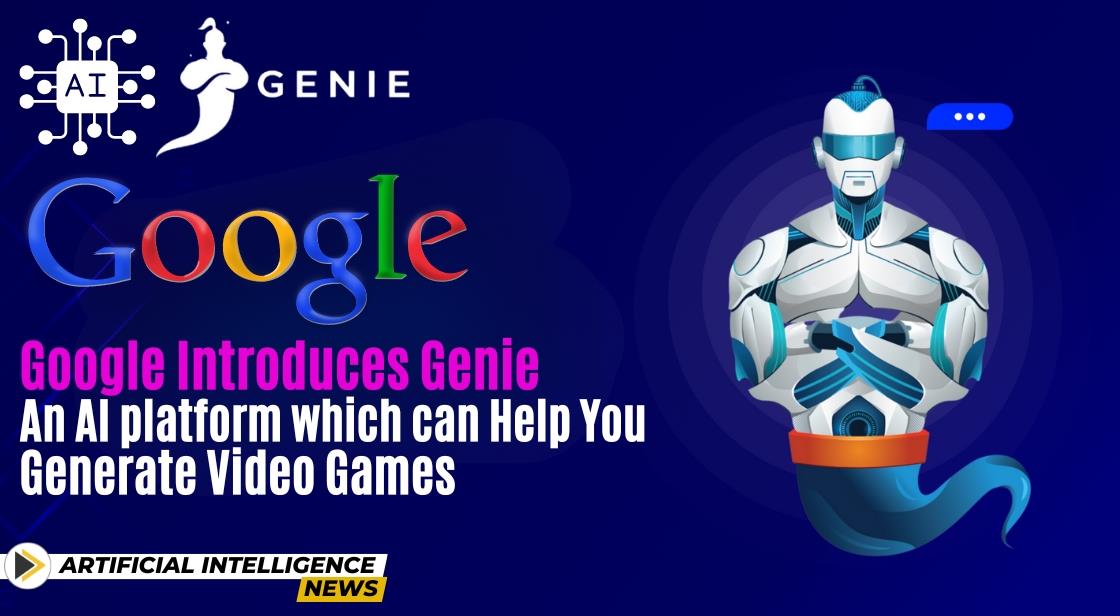Google introduces Genie, an AI platform which can help you generate video games

News Synopsis
In the rapidly evolving realm of artificial intelligence, Google's DeepMind team has introduced "Genie," a revolutionary AI platform designed to generate interactive 2D video games based on a single image prompt or text description. This groundbreaking development follows the trend of AI models like ChatGPT and Sora, pushing the boundaries of imagination and reality.
Understanding Google Genie: An AI Game-Changer
Genie, developed by Google DeepMind's Open-Endedness Team, is classified as a "world model" trained on an extensive dataset comprising 200,000 hours of unlabelled video footage, primarily from 2D platformer games. Unlike conventional AI models, Genie doesn't rely on explicit instructions or labelled data; instead, it learns by observing actions and interactions within these videos, enabling it to craft video games from minimal prompts or images.
Core Components of Genie
-
Video Tokenizer: Acting as a skilled chef breaking down ingredients, the Video Tokenizer processes vast video data into manageable "tokens." These tokens serve as the foundational building blocks for Genie's understanding of the visual world.
-
Latent Action Model: Comparable to a culinary expert analyzing transitions between frames, this model identifies eight fundamental actions, akin to essential "spices" in Genie's recipe. These actions encompass a range from jumping and running to interacting with in-game elements.
-
Dynamics Model: Similar to a creative cook predicting flavor interactions, the Dynamics Model forecasts the next frame in the video sequence, considering the current game state and player actions. This continuous prediction creates the illusion of an interactive and engaging gaming experience.
How Genie Works?
While the concept of an AI conjuring up video games may seem fantastical, the underlying process is quite intricate. Here's a breakdown of Genie's core components:
1. Video Tokenizer: Imagine a skilled chef preparing a complex dish. The chef breaks down ingredients into smaller portions for easier handling. Similarly, the Video Tokenizer efficiently processes massive video data into manageable units called "tokens." These tokens form the foundation of Genie's understanding of the visual world.
2. Latent Action Model: After the video data is "chopped" into tokens, the Latent Action Model takes over. This component acts like a seasoned culinary expert, meticulously analyzing transitions between consecutive frames in the videos. This analysis allows it to identify eight fundamental actions, the essential "spices" in Genie's recipe, such as jumping, running, and interacting with objects within the game environment.
3. Dynamics Model: Finally, the Dynamics Model enters the scene, akin to a creative cook who brings everything together. Similar to a chef predicting how flavors will interact based on chosen ingredients, this model predicts the next frame in the video sequence. It considers the current game state, including the player's actions (the chosen "spice"), and generates the subsequent visual result accordingly. This continuous prediction process ultimately creates the illusion of an interactive and engaging game experience.
Genie's Current State and Future Potential
It's important to note that Genie is still under development and comes with limitations:
-
Limited Visual Quality: Currently, Genie can only generate games at a low frame rate (1FPS), impacting the visual fidelity.
-
Research-only Access: As of now, Genie is not available for public use and remains a research project within Google DeepMind.
-
Ethical Considerations: Like any powerful technology, the potential misuse of Genie requires careful consideration. Google is actively addressing these aspects to ensure responsible development and implementation.
Despite these limitations, Genie's potential is vast. Once it becomes publicly available, it is expected to revolutionize creativity across numerous domains. Its ability to generate interactive worlds from minimal input opens doors for exciting possibilities in the future of entertainment, education, and beyond.
You May Like









